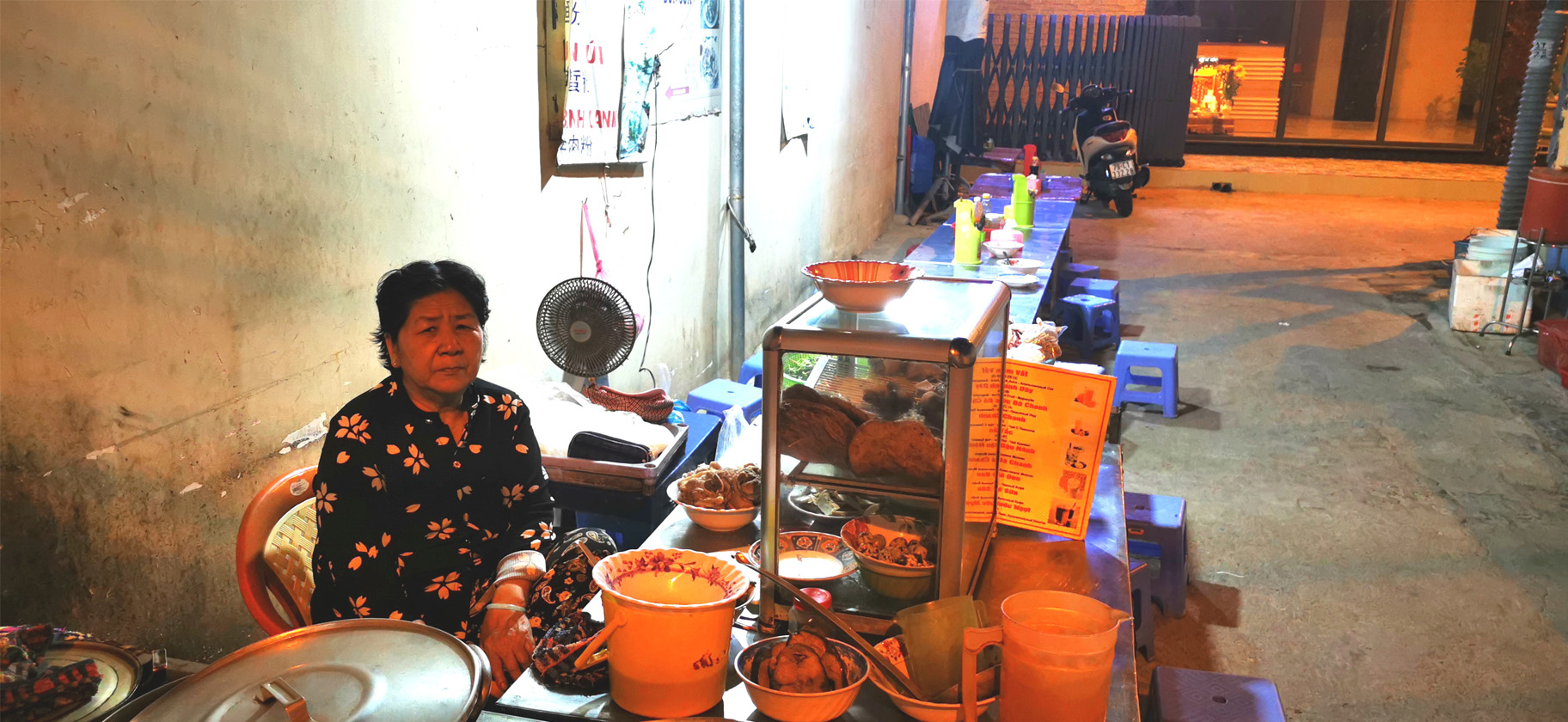Something Like a Pho-nomenon
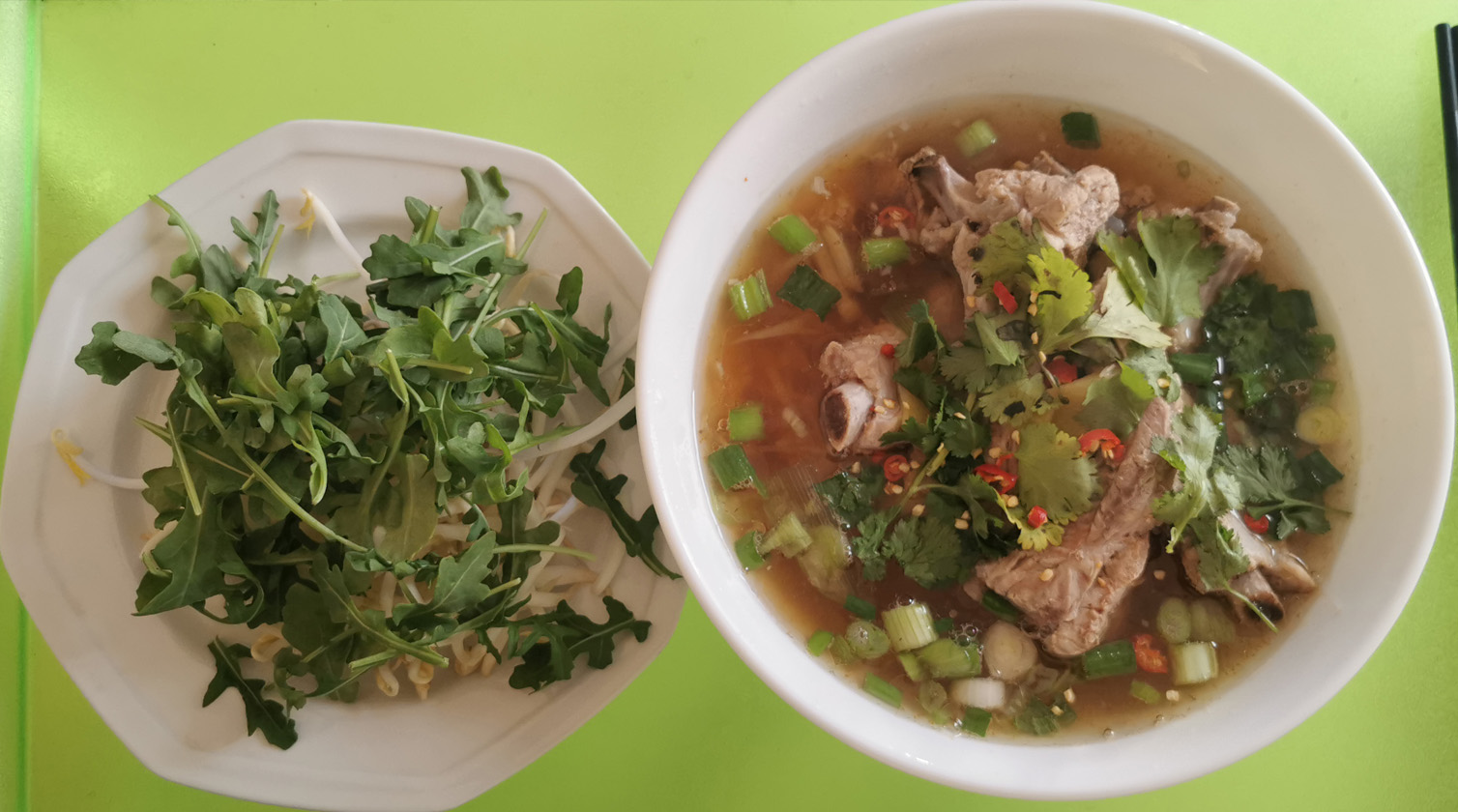
It’s not difficult to get your chopsticks and spoon on a rich and tasty noodle soup in Vietnam. Along every street in every city, down dark alleyways and in unsuspecting rural hideaways, there are places to have a seat and warm up your belly with chewy noodles and crispy herbs in a savoury broth. Pho has made its way out of Vietnam and into major cities around the world and has earned its spot as the representative dish of Vietnamese cuisine. The term ‘pho’ is now so well known around the world that it has become the standalone term for rice noodles in broth, but the truth is that the variety of noodle soups available in Vietnam are so varied that to place them all under the term ‘pho’ is a misnomer.
First, let’s clear up any confusion: it’s pronounced “Fuh”, not “Foh”. In fact, the term ‘pho’ really only applies to the type of noodle being used and you can get just as good a noodle soup from anywhere that serves “bun”. Pho is a broad flat noodle, and bun is more round like spaghetti. Both pho and bun are rice noodles. You can get soups with wheat noodles, the best and most well known being Mi Quang. ‘Mi’ is the word for wheat (or bread) but wheat noodles are more commonly served fried, and not in soup, as in the popular dish Mi Xao. You might also have seen the word “Mi” when you order the popular French bread sandwich Bahn Mi.
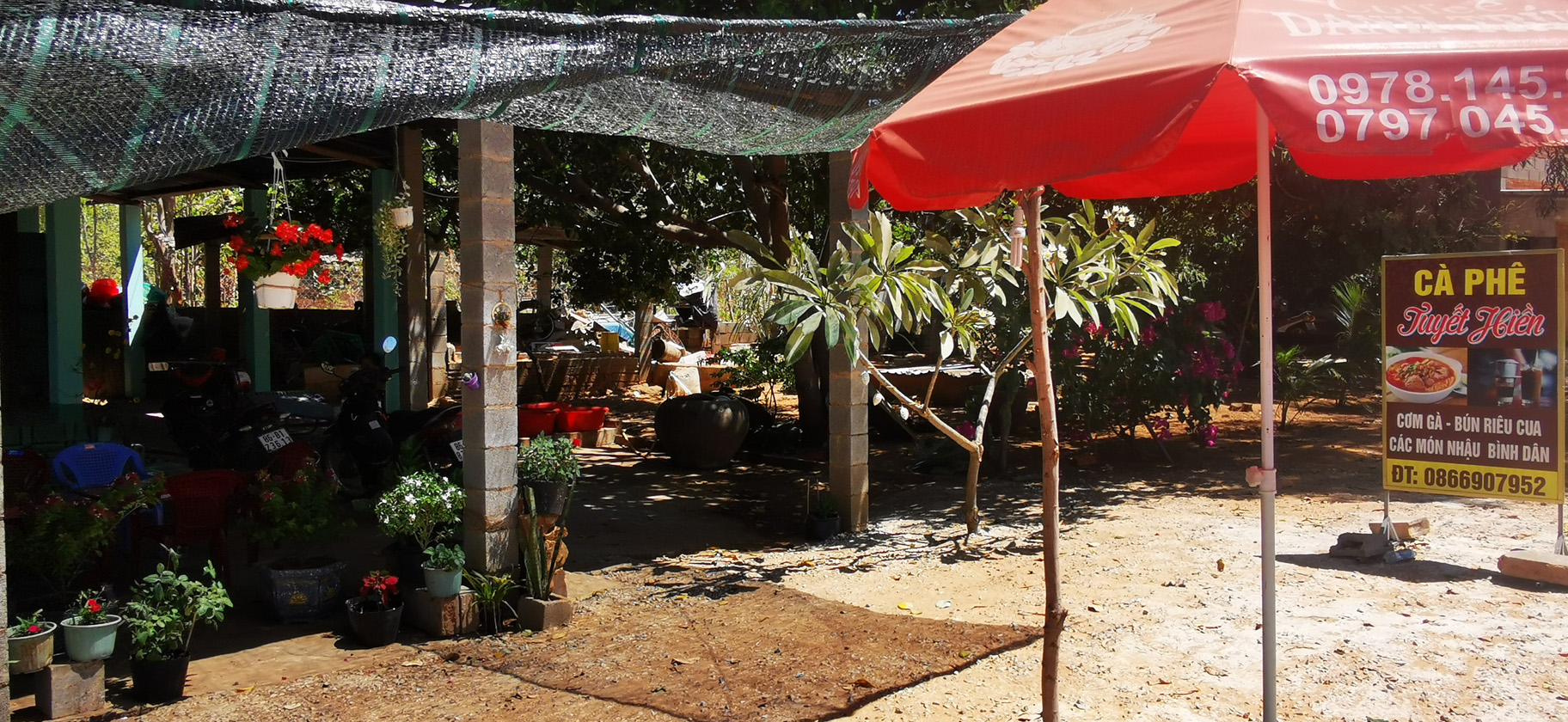 I would never recommend going to a restaurant in Vietnam and ordering pho. By all accounts the soups at any restaurant are fine, but the small corner shops occupied by old ladies who have nothing but a couple of pots and some old child-sized picnic chairs have by far the best-tasting soups, the wildest fluctuations in variety, the most charm, and the most competitive prices where a bowl of soup can cost anywhere from 30 to 50 thousand dong (about $3 to $5). Technically they’re illegal, but they’re tolerated, and it’s impossible to be disappointed.
I would never recommend going to a restaurant in Vietnam and ordering pho. By all accounts the soups at any restaurant are fine, but the small corner shops occupied by old ladies who have nothing but a couple of pots and some old child-sized picnic chairs have by far the best-tasting soups, the wildest fluctuations in variety, the most charm, and the most competitive prices where a bowl of soup can cost anywhere from 30 to 50 thousand dong (about $3 to $5). Technically they’re illegal, but they’re tolerated, and it’s impossible to be disappointed.
Although I say it’s impossible to be disappointed, it is possible to get in over your head. The Vietnamese do not waste food and consume the whole animal and many not-so-tempting bits do end up in soups. Meats are a key component to any noodle soup and very often the meats that are going to be prepared in your soup are on display so it’s important to get a visual and make sure you ask for what you want.
Soups have 5 essential components: the noodles, the broth, the protein, the bitter herbs and vegetables, and the accoutrements. There are as many variants as there are days in a year and you can have a noodle soup every day and never have the same soup twice. In fact, while in Vietnam I had at least one noodle soup every day. It’s handy, in fact, to think of noodle soup less as a dish that is part of a meal and more as part of your daily routine, a bit like your morning cup of coffee.
The Noodles
Ninety-nine times out of hundred your soup is going to come with rice noodles, either the flat pho, or the round bun. The person responsible for assembling your soup will have a whole pile of cooked noodles on hand that have been sitting around at the ready and a handful is the first ingredient added to your bowl. Your instinct might be to want to have freshly cooked noodles especially since rice noodles only take a couple of minutes to soften. However, for practical reasons of that just being another pot for the ladies running the soup stand to deal with, it’s also preferable to have previously cooked noodles because rice noodles, when they soften in the saltwater, come out sticky. Noodles suitable for soup should be drained and rinsed with cold water to remove excess starch and give them their ideal soft and slippery texture.
The Protein
Anyone with starry eyes at the idea of a vegetarian pho is out of their mind. There is no such thing and to suggest the idea to any self-respecting Vietnamese chef is lunacy. They will look at you like you are out of your head. Although meat is essential to any Vietnamese noodle soup, no soup should be thought of as a meat dish. Some soups have more meat than others and it depends who you’re going to for your soup, but for a few extra dong you can have more meat thrown in if you want, but generally speaking it’s best to trust whoever is making the soup for you.
Adding meat to your soup is a nuanced affair but any beginner can get away with understanding just two basics: bo and ga. Bo is Vietnamese for beef, so any menu will have the dish Pho Bo on it. Ga is chicken. Always get Bo.
Beef and chicken are the meats for purists, but pork works its way into many soups and generally speaking a pork broth also yields the richest flavours. When there’s pork you might be able to swing a whole hock, some barbecued pork chiar siu, some crispy pork roast, or, more often than not there will be small pork meatballs floating around. If it’s on display you can point to it and ask them to throw it in and they will.
Beef noodle soups are kind of their own category because when they spring up there can be an enormous variety of what beefy bits can end up in your soup and it’s handy to know a few of your favourite cuts. First, beef and pho go together like white on rice so Pho Bo on a menu just means flat rice noodles with beef in broth. But you can often see menus that read: Pho Tai, Pho Gao, Pho Chien, Pho Tai Gao, Pho Tai Chien, etc. Essentially, these are all beef noodle soups just different cuts and different preparations.
Tai is thinly sliced tender raw beef that does all its cooking when the broth is added.
Gao is a tender fatty boiled brisket that they will slice up and put into the soup.
Chien is the word for fried where whatever part of the cow your getting (usually a tender, steak-like, cut) has been cooked in a pan before it goes in the soup.
And there are more. When in doubt, point and ask.
Seafood soups pop up as well and Bun Ca made with a river fish like carp was one of my personal favourites. Bun Rieu is another unique and popular soup made from pulverized crabs that occupy the rice paddies and is served with chunks of stewed tomatoes.
Although I’m putting it into the protein category here, stewed root vegetables like daikon, potatoes, or carrots, do occasionally pop up in soups as well and at the end of the day, if it can be thrown into a soup and be nourishing then there’s no reason it can’t be invited to the party.

The Broth
Here’s where things can get complicated if you force yourself to rigidly follow some sort of recipe as though there are rules to making a good pho noodle soup. Personally, I find a good broth has been made with stewed bones that have been blended with the classic five-spice blend of Asian cuisine. The five-spice blend is made from cinnamon, cloves, cardamom, star anise, and coriander. 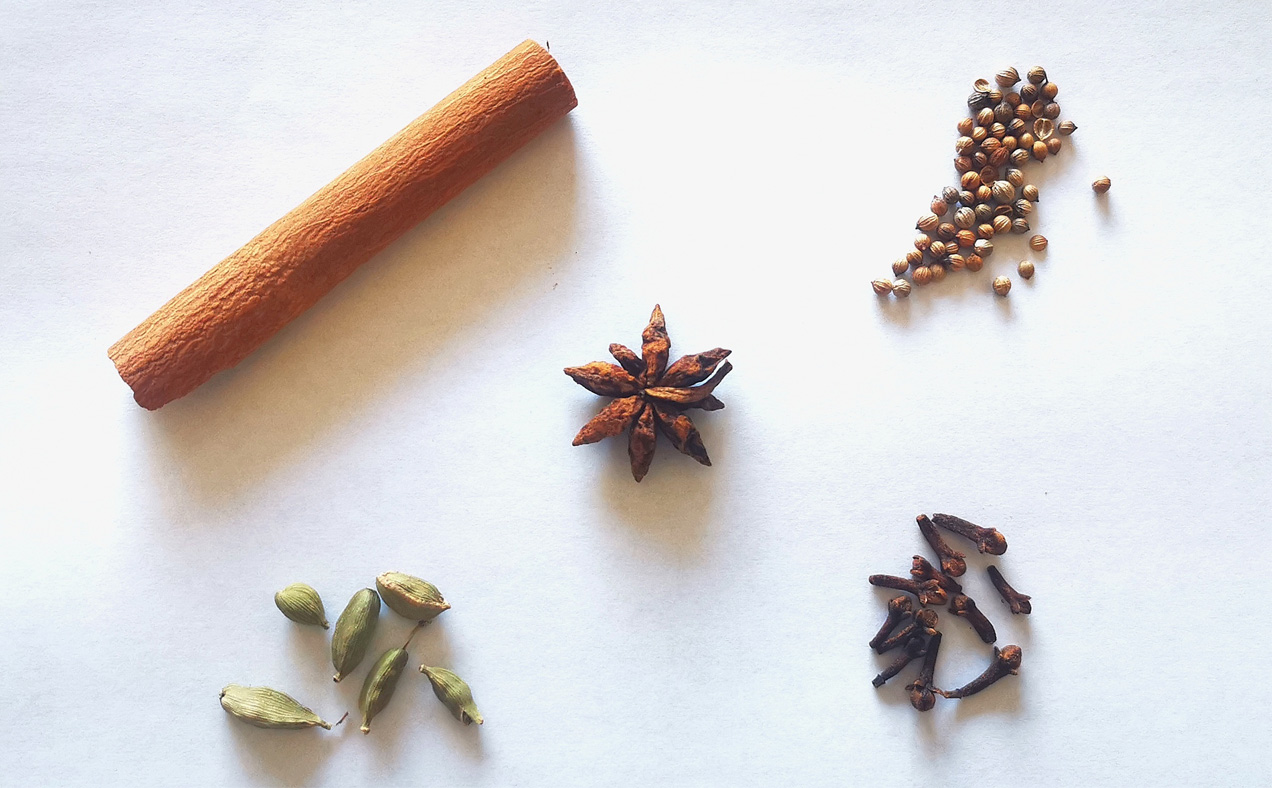 The ratios here are anybody’s guess. I will say this though, broths in Vietnam are clear and that means that chefs are only using whole spices – never ground. I have found that stewing a mix of these ingredients for about 30 minutes is enough to get things going, but by the time the broth hits day 2 things really start to get interesting. If you’re making broth at home always strain it before you serve it so that the spices don’t end up in the actual soup.
The ratios here are anybody’s guess. I will say this though, broths in Vietnam are clear and that means that chefs are only using whole spices – never ground. I have found that stewing a mix of these ingredients for about 30 minutes is enough to get things going, but by the time the broth hits day 2 things really start to get interesting. If you’re making broth at home always strain it before you serve it so that the spices don’t end up in the actual soup.
Purists will stick to a clear broth made from bones with the spice mix, but as you travel through the country especially as you head south from Hanoi you do begin to get into spicier broths and Bun Bo Hue is the most common spicy noodle soup you’re likely to see on menus around Vietnam. For enthusiasts eager to try this one at home, I recommend having your meat broth and the broth with your stewed fragrances separated. In a small pot heat some of the meat broth and add fresh chopped garlic and ginger. Remember that broth is served clear but here you want the garlic and the ginger bits to end up in your soup so you almost have to think of them as a garnish and not part of the broth per se. Once the garlic and ginger have had a chance to work their way in there you can then add the fragrant broth before you add it to your noodles. Adding a dollop of chilli paste or sambal into your bowl before you add the mixed broth takes it the rest of the way.
You can have a nice broth that’s just meat broth and fragrances, but there are several ways to spruce it up just a tad. The best noodle soups are a harmonious blend of all of the tastes including salty, sweet, sour and bitter. The sour and the bitter get worked in there in other ways, but it’s important to note that the salty and the sweet are both in the broth. Adding a few spoons of brown sugar nicely darkens up the broth and can add a note of sweetness or you can add mirin or get adventurous and throw in some maple syrup. There are no rules, so you can get creative – just don’t overdo it. Then, of course, add a little salt to suit your taste. A few drops of fish sauce to give it a little bit of stink sounds like a sideways move but it adds a little extra sea-salty flavour and really takes things in a nice direction.
The Bitter Herbs
One of the things that make Vietnamese noodle soups so good is their completeness. It really is a whole meal right in a bowl. It’s got all of the calories you’ll need and well-balanced macronutrients as well, and that’s because one of the key components to any noodle soup is the fresh greens that are served alongside. Besides adding vitamins and nutrients to the dish the crispness of the fresh greens adds a completely fresh and light texture to the otherwise soft and rich nature of the meat and the broth. This is also where that key bitter taste comes from to balance out the other flavours. The most common kinds of bitter herbs and greens you’ll see in North America are basil and bean sprouts, but in Vietnam, you’re likely to get just about anything that’s leafy green and edible. A rich variety of lettuces, rockets, cilantros, and spinaches, pea greens, shoots, and chards. Just tear them up and throw them in there to your heart’s content. Every noodle soup I ate in Vietnam I saw as a chance to get my helping of vegetables and found that there was almost never too much you could throw into the broth and my ratio of noodles to veggies often came out as one to one.
The Accoutrements
There is almost no end to what you can throw into a Vietnamese noodle soup but there is one last essential item that comes alongside every bowl: lime. Every noodle soup is a full orchestra of salty, sweet, bitter, and sour, and that little dash of lime that delivers a hint of sour is subtle but essential. I find it only takes a squeeze of 1/8th of a whole lime to achieve the full desired effect, but those that prefer a more sour broth can add as much as they like.
Not everyone loves a spicy hot soup but I find that I prefer mine with a little chilli heat, or ‘ot’ as it’s known in Vietnam. If you ask for ot sometimes you’ll be served a plastic squeeze bottle of the local variety of sriracha, but you can just point to your finger to indicate that you want a fresh chilli, since a single chilli pepper is about the same basic shape and size. Usually, the fresh chillies you’ll get will be rings of thai red chillies that have the freshest and most neutral flavour that is perfect for noodle soups by adding heat without disrupting other flavours. Most tables will also have a small bowl of chilli paste if that’s your preferred way to add heat.
For those who like a tangier broth, most tables will also have a dish of fish sauce vinaigrette. It’s usually a premade mix of mirin, fish sauce, vinegar and garlic that is also commonly used as a dipping sauce. Spoon in as much as you’d like.
Regional Varieties
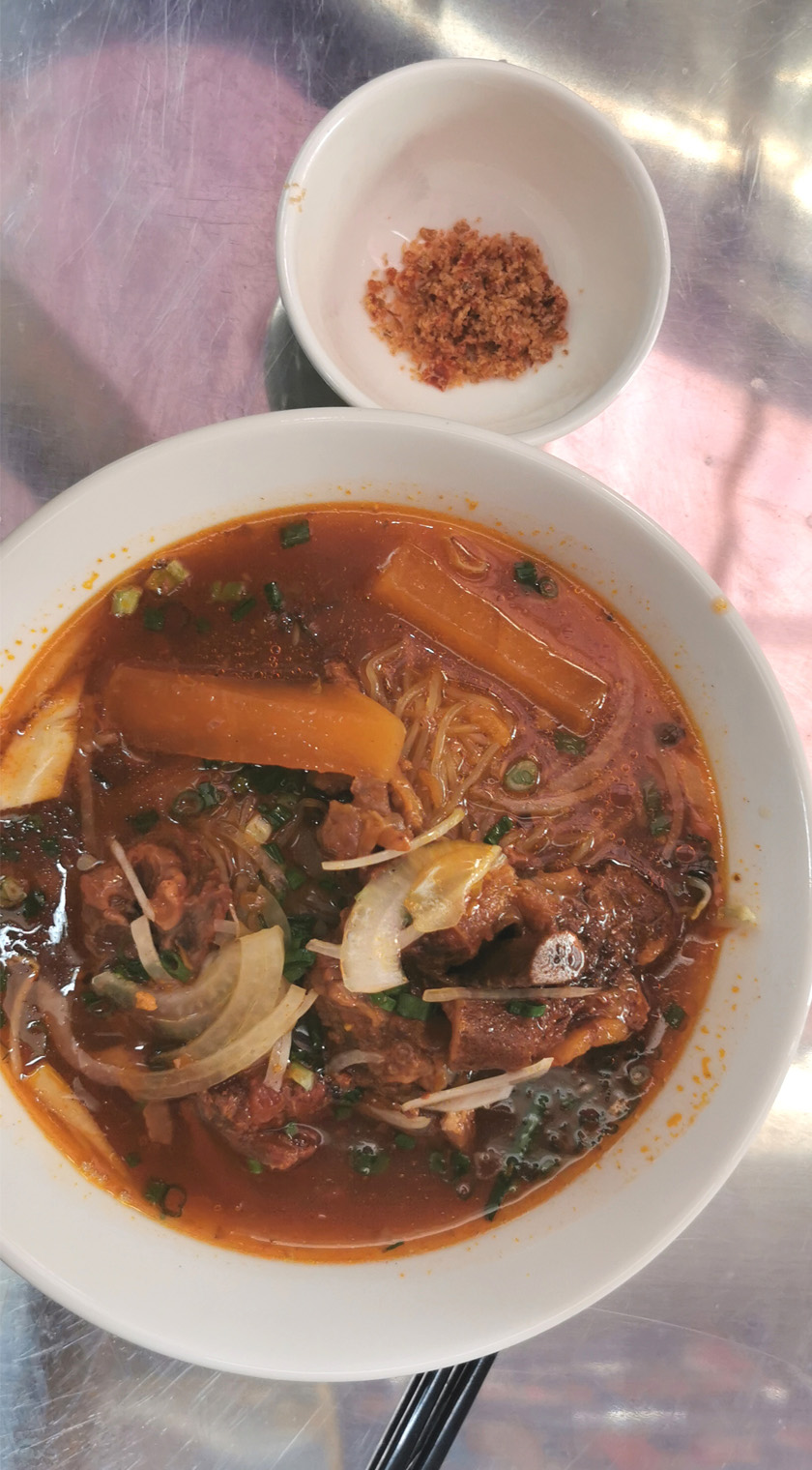 From north to south, the various regions of Vietnam try to put their own distinctive spin on the dish. In the north around Hanoi, for example, soups are more simple where the flavouring of the broth is going to be more subdued and where the herbs in the soup and served alongside may be nothing more than some slivers of green onion. Further south, however, and the richness of the broths and sauces added to the soup as well as everything served alongside get amped up. Hoisin and other sauces, different varieties of chillies, peanuts and other nuts and seeds, cooked and uncooked vegetables, there really is no limit on the ways to spruce up a soup. Though it can be found on menus throughout the country, Bun Bo Hue is from the city of Hue in central Vietnam and is typically flavoured with lemongrass and served with cubes of congealed pigs blood. When it comes to richness of flavour, Bun Bo Hue is king and the city has the reputation of being the gastronomic heart of Vietnam.
From north to south, the various regions of Vietnam try to put their own distinctive spin on the dish. In the north around Hanoi, for example, soups are more simple where the flavouring of the broth is going to be more subdued and where the herbs in the soup and served alongside may be nothing more than some slivers of green onion. Further south, however, and the richness of the broths and sauces added to the soup as well as everything served alongside get amped up. Hoisin and other sauces, different varieties of chillies, peanuts and other nuts and seeds, cooked and uncooked vegetables, there really is no limit on the ways to spruce up a soup. Though it can be found on menus throughout the country, Bun Bo Hue is from the city of Hue in central Vietnam and is typically flavoured with lemongrass and served with cubes of congealed pigs blood. When it comes to richness of flavour, Bun Bo Hue is king and the city has the reputation of being the gastronomic heart of Vietnam.
Conclusion
Noodle soups in Vietnam are delicious everywhere. Even if you get a soup that isn’t that good, it’s still not that bad. But they do cater to every taste imaginable and you never know when you’re going to have the best noodle soup of your life, so finding the perfect noodle soup is really about a partnership of the shared tastes between yourself and the chef. As a result, customers can easily become devotees of a particular soup joint. One might be inclined to think, then, that a soup stall with many customers is the best place in town, but the number of customers can more often than not be a reflection simply of how long they’ve been around and allowed to operate at that particular corner. The truth is, unless you know, you never know. It’s best to keep trying soups at every place you can find until you land at a place where the flavours make your eyes roll back. And then, when you find that perfect soup to fit your tastes keep going back and get them to serve you soups every which way they know how.
I stumbled on my perfect place after I arrived late in Nha Trang and needed to end my day with a bite to eat. The soup shop in question was down an alley off the main street and, as it was late at night, it wasn’t crowded and they were getting ready to pack things up. I’m not sure I realized it as I was eating because it had been such a long day of travel and I was more concerned with filling my belly and getting to bed than savouring the meal, but the next morning I couldn’t get that soup out of my mind. I searched high and low the next day, returning many times to the corner where I thought it had been, but as Nha Trang was a brand new city that was unfamiliar to me I couldn’t find it. I was dismayed and instead ate at a different place that was fine but left me slightly disappointed because it didn’t measure up to the soup from the night before. I was saddened, fearing that I would never have that soup again. Every time I left my accommodation I would try to walk by the corner where I thought it had been and lo and behold, two days later my ladies were there with their soup – I guess even the soup ladies deserve to take the weekend off. I returned for noodle soup every day until I eventually left Nha Trang and continued my journey south, and I never had a better soup after.
